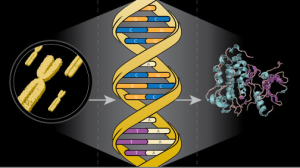Mass spectrometry (MS) is an analytical chemistry technique that measures the amount and type of chemicals present in a sample with the mass-to-charge ratio and abundance of gas-phase ions. A plural spectrum is a plot of the ion signal as a function of the mass-to-charge ratio. It is mainly applied to pure samples as well as complex mixtures. Proteome is a set of proteins that produced or modified by an organism (or) system, it mainly coined to analog with genomics, the study of the genome. These are vital parts of living organisms, as they are the main components of the physiological metabolic pathways of cells. Protein mass spectrometry results as an important emerging method for the characterization of proteins.
Highlights in Proteomic Technology:
Sample Preparation
• Lysate preparation = -Lysis, – Fractionation, – Depletion, -Enrichment, – Dialysis: In-solution Digestion = -Reduction, -Alkylation, -Digestion: Peptide Enrichment/Clean up = MS analysis.
• Lysate Preparation = 1DE, get plug: In-gel Digestion = -Reduction, -Alkylation, -Digestion: Peptide Extraction = Peptide Enrichment/Clean up = MS analysis.
Quantitative Methods:
Example-: SILAC- Condition 1: Heavy arginine heavy lysine, Condition 2: Light arginine light lysine, both samples are mixed results trypsin digestion: MS spectrum. Other methods also applied for this technique as ICAT, iTRAQ, Enzymatic labeling.
Shotgun Data Analysis
Shotgun mainly refers the bottom-up proteomics techniques by identifying proteins in complex mixtures using a combination of high performance liquid chromatography combined with mass spectrometry.
Targeted Proteomics:
It is a mass spectrometry technique mainly uses multiple stages of tandem mass spectrometry (MSn with n=2 or 3) for ions of specific mass (m/z), at a specific time. It values the m/z and time is defined in an inclusion list, which is derived from a previous analysis.
Data-Independent Analysis:
In mass spectrometry, data-independent analysis analyzed in the second stage of tandem mass spectrometry, this method mainly determines the molecular structure in which all ions within a selected m/z range.

